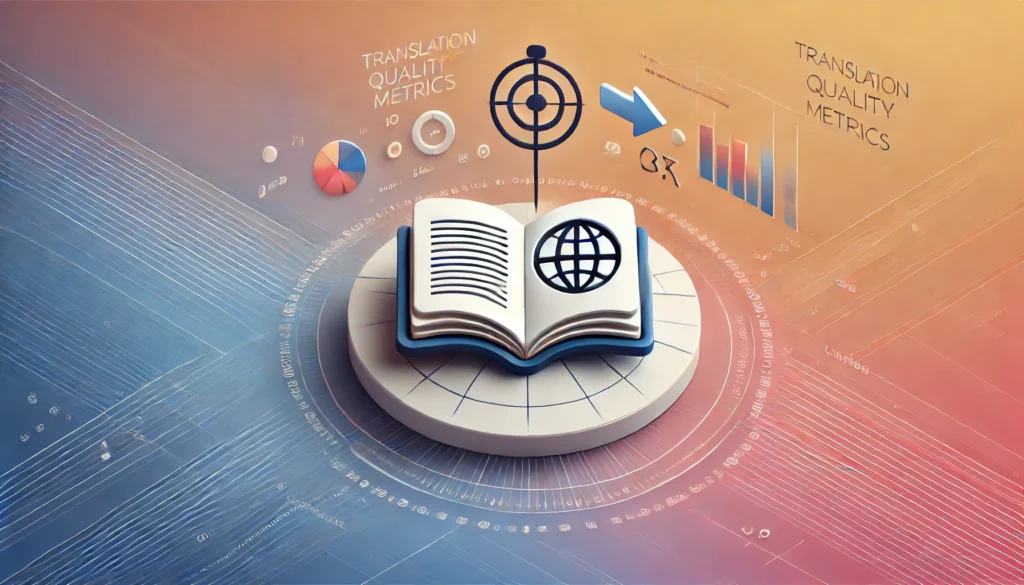BLEU, or Bilingual Evaluation Understudy, assesses machine translation quality. For Qwen2, Qwen2的BLEU指标 evaluates how well the model translates text compared to human references. BLEU scores provide a clear measure of Qwen2’s ability to generate accurate translations. This article explores the importance of Qwen2的BLEU指标 for Qwen2, how it’s calculated, and how we can enhance it.
Understanding Qwen2 Language Model
Qwen2 is an advanced language model that excels in translation and summarization. It uses deep learning with attention mechanisms and transformer layers to process large amounts of text across multiple languages. By capturing context and tone effectively, Qwen2 delivers highly accurate translations, making it a powerful tool for NLP tasks.
What is BLEU (Bilingual Evaluation Understudy)?
Researchers introduced BLEU in 2002 as a way to measure translation quality. It compares machine translations to human-generated references using n-grams for precision-based assessment. The score ranges between 0 and 1, with higher scores reflecting closer alignment to human-level translations. Despite some limitations, BLEU remains one of the most trusted metrics for language model evaluation.
Why BLEU Matters for Qwen2 Performance
BLEU plays a vital role in measuring Qwen2’s translation performance. A higher BLEU score means that Qwen2 produces translations that closely align with human output. The metric helps assess the quality of Qwen2’s translations and allows comparison with other models. This makes BLEU essential for evaluating Qwen2’s accuracy and ensuring high-quality translations.
The Calculation of BLEU for Qwen2的BLEU指标
To calculate BLEU, you measure how many of Qwen2’s translated n-grams match reference texts. The method evaluates sequences of words and uses a brevity penalty to prevent overly short translations from inflating the score. By combining precision and length-based adjustments, BLEU provides an overall score that reflects Qwen2’s translation quality.
Components of BLEU Metric in Qwen2
BLEU relies on three key elements: n-grams, precision, and the brevity penalty. N-grams evaluate word sequences from one to four words. Precision measures how many of these words match the reference. The brevity penalty adjusts the score if the model produces shorter translations. These components together form the basis for Qwen2’s BLEU score.
How BLEU Evaluates Translation Quality in Qwen2
BLEU evaluates Qwen2’s translations by comparing them to reference texts. It examines word and phrase matches, looking for precise n-gram alignments. Higher BLEU scores suggest Qwen2’s output closely mirrors human translations in accuracy and fluency. This makes BLEU an effective way to assess the model’s ability to generate natural, grammatically sound translations.
Limitations of BLEU in Evaluating Qwen2
Although BLEU is a reliable metric, it has some shortcomings. It focuses on precision but doesn’t always capture fluency. For instance, Qwen2 might generate grammatically correct yet awkward translations and still score high. BLEU also overlooks synonyms, so different word choices may reduce the score even if the meaning remains the same. Additionally, longer, more complex translations might face penalties, which can misrepresent the overall quality.
How Qwen2的BLEU指标 Compares to Other Language Models
Compared to other models like GPT and BERT, Qwen2 consistently delivers high BLEU scores. GPT-3 may perform better in creativity-based tasks, but Qwen2 excels in translation accuracy and linguistic structure. BERT, designed for sentence-level tasks, tends to score lower in translation quality. Qwen2’s higher BLEU scores, especially in multilingual contexts, confirm its strong position in the translation field.
Improving Qwen2’s BLEU Score
Improving Qwen2’s BLEU score requires several strategies. One approach involves using larger, more diverse datasets to expand the model’s understanding of language. Another method focuses on refining the attention mechanism to better grasp contextual clues. Additionally, post-processing techniques like reranking translations help fine-tune the model’s output, resulting in higher BLEU scores.
Use Cases of Qwen2 with High BLEU Scores
Many industries rely on Qwen2’s high BLEU scores for precise translations. For example, Qwen2 handles complex legal and medical texts where accuracy is critical. It also powers multilingual chatbots for customer service, delivering consistent, high-quality translations. These real-world applications highlight Qwen2’s ability to maintain high BLEU scores in practical scenarios.
BLEU Score Interpretation for Qwen2 Outputs
Interpreting BLEU scores helps us understand the translation quality of Qwen2. A score above 0.6 generally indicates near-human translation quality, while lower scores suggest areas for improvement. However, BLEU scores are context-dependent. A high score in one domain doesn’t always guarantee success in another, making it important to evaluate the scores with care.
Qwen2’s BLEU Scores Across Different Languages
Qwen2’s BLEU scores vary depending on the language pair. For instance, it performs better with languages like French and Spanish, which share linguistic similarities with English. On the other hand, languages like Russian or German might result in lower scores due to their complex grammatical structures. Overall, Qwen2 achieves the highest BLEU scores when translating between high-resource languages.
Alternative Metrics to BLEU for Qwen2 Evaluation
Although BLEU is widely used, other metrics like ROUGE and METEOR provide additional insights. ROUGE focuses on recall, which makes it useful for tasks like summarization. METEOR, meanwhile, considers synonyms and word forms, offering more flexibility in evaluation. These alternative metrics complement BLEU, giving a more complete understanding of Qwen2’s translation capabilities.
Impact of Dataset Quality on Qwen2的BLEU指标
The quality of training data greatly affects Qwen2’s BLEU scores. High-quality datasets that include diverse language pairs and well-annotated examples lead to improved performance. In contrast, poor-quality datasets introduce noise, lowering the BLEU score. Regularly updating and refining these datasets ensures that Qwen2 continues to perform at its peak.
Human vs. BLEU Evaluation for Qwen2
Human evaluation complements BLEU by providing insights into aspects like fluency, tone, and cultural relevance. Humans can notice subtleties that BLEU might miss, such as how natural a translation sounds. Combining BLEU with human evaluation results in a more well-rounded understanding of Qwen2’s strengths and weaknesses. This ensures the model produces both technically accurate and user-friendly translations.
Optimizing Qwen2’s BLEU Score for Specific Industries
Qwen2’s BLEU scores can be optimized for different industries by training it on specialized datasets. In healthcare, for instance, using medical terminology improves Qwen2’s ability to translate accurately. Similarly, fine-tuning the model for legal terms enhances its performance in legal document translations. This targeted optimization helps Qwen2 achieve higher BLEU scores for specific use cases.
Future Trends in BLEU Score Evaluation for Qwen2
As NLP continues to evolve, BLEU score evaluation methods will likely improve. Researchers are working on new BLEU variations that factor in context and style. Additionally, AI-driven evaluation tools may soon provide more nuanced insights. These advancements will help ensure that BLEU remains relevant as an evaluation metric for translation models like Qwen2.
Common Misconceptions About Qwen2的BLEU指标
Many people believe that a higher BLEU score always means better quality. In reality, BLEU doesn’t account for fluency or naturalness. Another misconception is that BLEU is the only evaluation metric that matters. Combining BLEU with other metrics and human judgment provides a fuller understanding of Qwen2’s translation performance.
Conclusion: The Importance of BLEU in Qwen2 Evaluation
Qwen2的BLEU指标 remains one of the most crucial tools for measuring Qwen2’s translation quality. It offers an objective way to assess how well Qwen2’s translations align with human references. While BLEU has limitations, when combined with other metrics, it provides valuable insights. As Qwen2 continues to evolve, Qwen2的BLEU指标 will remain a key part of its evaluation process, ensuring accurate, fluent, and contextually appropriate translations.


